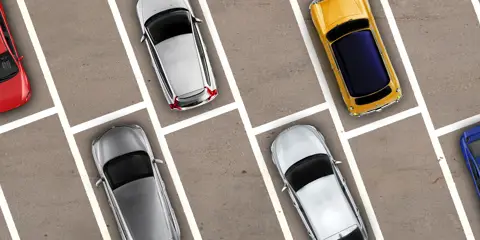- Services
- Airports
- Alcohol Licensing
- Animal Control
- Building Services
- CCTV - Public Use
- Cemeteries
- Environment and Sustainability
- Environmental Health
- Permits
- Rates & Property
- Resource Consents
- Rubbish & Recycling
- Services A - Z
- Summer Services
- Transport and Parking
- Water Services
Winter Road Reports
Get a grip with our Winter Road Reports.
Quick links
Sign up for our daily email!
Sign up today and every morning over the winter months, you'll get an email providing a general overview of the road conditions, as provided by our crews who are out monitoring the roads from the wee small hours.
What to expect
-
An entertaining (we hope) email will be sent to subscribers between 6.30am-7.00am every day over the winter months. This will provide general local road conditions (including State Highways).
-
That road conditions can change rapidly. We can't list every patch of ice, nor can our crews be everywhere at once. Our advice is to always carry chains, slow down, and drive to the conditions. We will always do our best to give you the most up-to-date conditions for key commuter roads, but we can’t drive every road in the district before 7.00am, and we can’t inspect every single bridge deck or shady spot. Remember, if it’s snowing, this slows us down too and our Winter Road Reports should never replace common sense.
-
Carry chains all winter and know when and how to fit them. Especially if you're driving over the Crown Range Road - you will need them.
-
We'll post the morning report on our Facebook page. We'll also post updates during the day when conditions change.
Whitelisting our emails
Our road reports are sent via a cloud based system. They are sometimes automatically classed as 'promotional' by certain email providers and may end up in your 'promotions tab', particularly if you're using a web based provider like Gmail or yahoo.
This means that you might not get an alert when the report arrives in your inbox. However, this is easily changed if you add our address to your safe senders list (or whitelist) – more info on how to do this here (https://www.campaignmonitor.com/resources/guides/whitelisting/).
Community text alerts
You can also sign up to join our community text alert database. This means we'll send you a text message and let you know about unforeseen issues in your area, i.e. road closures, extended water-shutdowns, ice and snow affecting roads or any other other emergencies in your community.
Winter driving tips
Here are some tips to keep yourself and others as safe as possible when you’re on the road. We’ve translated these into seven languages which you'll find below:
Here are some key tips to keep in mind below.
-
Carry chains and know how and when to fit them. If you regularly travel over the Crown Range chains should be carried all winter. Check out our Snow Chain fitting instructional flyer or keep an eye out for our free workshops at the start of the season.
-
Accelerate smoothly and brake gently - you'll maintain traction better if you don't put sudden force on the pedal.
-
Plan extra travel time and slow down - don't rush, you're on a journey, not in a race.
-
Four-wheel drive vehicles are no safer than other vehicles, especially downhill.
-
Make sure all car windows are free of snow and ice before driving - you can receive an instant fine if you don't.
-
Check the road conditions before you leave the house.
-
Be aware that shaded areas may be icy all day.
-
Ice can occur at any time of day.
-
Take extra care on bridges.
-
Double your following distances.
-
Never overtake a grit truck.
-
If it's one of those really cold, snowy or icy days, sometimes it's better to stay home and only travel if it's absolutely necessary.
A few easily consumable videos can be found below to help you be better prepared when heading out on the roads this winter.
Clean your windscreen
Take your chains
Check the weather
Crown Range Summit webcam
Stay up-to-date on the conditions at Crown Range Summit with our latest webcam image. Check for snow, cloud cover, and other weather conditions before you head out.
Frequently Asked Questions
-
Looking for updates on winter driving conditions throughout the day? Keep an eye on our Facebook and Twitter pages for any changing road conditions you may need to know about. If particularly snowy weather makes an appearance, we’ll also send a text alert out to anyone on our database. You can sign up for free community text alerts and select which locations are relevant at www.qldc.govt.nz/text-alerts.
We also recommend checking Waka Kotahi NZTA’s website for updates on State Highways at www.journeys.nzta.govt.nz. And if you’re planning to head over the Crown Range, check out the webcam at the summit at www.metservice.com/traffic-camera/crown-range.
-
We’ll start sending our daily Winter Road Report near the end of May, unless road conditions have their say sooner. Each morning, we’ll look to deliver your report fresh with the latest conditions between 6.30am and 7.00am. While we try to be as early as possible, timeframes can shift depending on snowfall, the amount of ice present on roads, and generally how busy crews are making sure those roads are safe.
-
Our crews use a variety of different treatments to help keep roads in the Queenstown Lakes District safe during winter. We clear ice and snow from priority roads and main transport links, making sure they’re gritted before moving onto secondary roads, then footpaths on those particularly snowy days. We also use Calcium Magnesium Acetate (CMA) – it’s a biodegradable de-icing agent we spray on roads, and it works when road temperatures are above -7°C.
Find out when your road is likely to be cleared in the event of heavy snowfall with our map of priority roads at www.qldc.govt.nz/winter-road-reports.
-
When ice and snow hit we prioritise the main transport links first.
Check out the maps below for priority roads and winter maintenance service levels.
-
Missed one of our chain fitting workshops? Practice how to fit chains on your vehicle in the driveway at home, because there’s nothing worse than having your debut performance on the Crown Range at 8.00pm while it’s -3 degrees and bucketing with snow. Trust us. Only fit chains when there’s snow settling on the road, or if you are instructed to put them on by Police, ski field operators or QLDC’s Winter Road Reports. And if you’re not sure which wheels on your vehicle to fit chains to, check your vehicle manual or have a chat to your local mechanic.
Make a note of which wheels to fit your chains to and leave it in the bag that holds your chains.
-
CMA (Calcium Magnesium Acetate) is a biodegradable and environmentally friendly/non-corrosive de-icing agent that is sprayed on the roads to stop ice from forming to about -7 degrees.
We typically use a combination of grit and CMA however there are potential advantages to reducing gritting and increasing CMA usage such as:
-
No grit to clean up reducing cost and environmental impact
-
Fewer traffic accidents on loose grit
-
CMA lasts for up to 7 days, whereas grit can be displaced by traffic onto the verge after an hour
-
Overall significantly lower cost
-
Less grit on the side of the roads will improve safety for pedestrians and cyclists
The downsides to CMA are that it can be removed by rain so can be a challenge to reapply quickly, and while it can be applied in light snow to stop ice packing down it will be less effective in a heavy snow event. Should there be a heavy snow event we will still attend to that in the usual way by ploughing and gritting.
-





